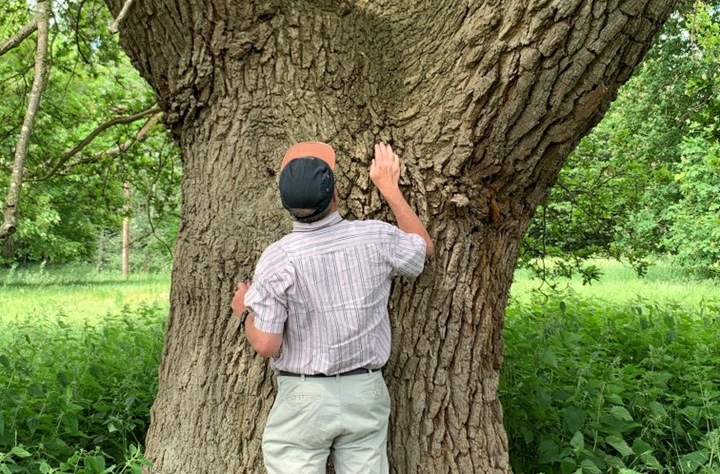
Research Fellow
Dr Paul Johnson
Whitley Analyst
PROFILE
Paul is a Research Fellow at WildCRU (The Whitley Analysis in recognition of long standing sponsorship by the Whitley Trust). He is also a retained lecturer in Quantitative Methods at Pembroke College.
Since joining the WildCRU in 1992, his principal focus has been on providing quantitative support across a wide range of WildCRU projects tackling issues issues in global conservation biology.
He has been particularly involved with farmland and wildlife in the UK, exploring how biodiversity is affected by modern farming practices. Much of this work has been summarised in several chapters in the two-volume book (edited by David Macdonald and Ruth Feber), which synthesised the WildCRU’s agro-ecology studies over the previous 25 years (Wildlife Conservation on Farmland two-volume book set).
A number of recent projects he has contributed to have, in line with recent research priorities in the group, been aimed at tackling human-wildlife conflicts surrounding large carnivores. He was part of the WildCRU team assisting the WildCRU’s then Director to prepare a report on Trophy Hunting, requested by the UK Government in response to the publicity surrounding the death of the lion Cecil in the summer of 2015 [Report on lion conservation, 2016].
Paul teaches a course in statistical analysis methods to the students on the WildCRU post-graduate diploma course, and supervises several WildCRU graduate students. Paul’s first degree was gained at Leeds University (B Sc Zoology); he subsequently completed a PhD in freshwater ecology at Reading University (in collaboration with the Freshwater Biological Association).


SELECTED PUBLICATIONS
Full publication list here.
Practical advice on variable selection and reporting using Akaike information criterion
Attitudes to pangolins and factors affecting their conservation in human dominated landscape in Nepal
Understanding nuanced preferences for carnivore conservation: to know them is not always to love them
What is a lion worth to local people – Quantifying of the costs of living alongside a top predator
Practical advice on variable selection and reporting using Akaike information criterion
The various debates around model selection paradigms are important, but in lieu of a consensus, there is a demonstrable need for a deeper appreciation of existing approaches, at least among the end-users of statistics and model selection tools. In the ecological literature, the Akaike information criterion (AIC) dominates model selection practices, and while it is a relatively straightforward concept, there exists what we perceive to be some common misunderstandings around its application. Two specific questions arise with surprising regularity among colleagues and students when interpreting and reporting AIC model tables. The first is related to the issue of ‘pretending’ variables, and specifically a muddled understanding of what this means. The second is related to p-values and what constitutes statistical support when using AIC. There exists a wealth of technical literature describing AIC and the relationship between p-values and AIC differences. Here, we complement this technical treatment and use simulation to develop some intuition around these important concepts. In doing so we aim to promote better statistical practices when it comes to using, interpreting and reporting models selected when using AIC.
Attitudes to pangolins and factors affecting their conservation in human dominated landscape in Nepal
Pangolins in Nepal are found mostly in human-dominated landscapes where their numbers are declining due to illegal hunting and trade. Positive attitudes of local people are believed to be powerful drivers for the conservation of threatened species. We explored local attitudes using a semi-structured questionnaire survey of 1017 people from 105 villages in rural areas across Nepal to investigate the key factors influencing local attitudes towards pangolins and their conservation. Topography and education level were identified as strong predictors of attitude scores as was geographic variation associated with differences between provinces. Positive attitudes were observed in the majority of respondents from Madhesh Province and Koshi Province in eastern Nepal, in those with higher levels of education and those from the lowland Terai region. Respondents from Karnali Province, western Nepal and those living in the Mid-hill region, had significantly lower attitude scores. However, a significant number of respondents with negative attitudes towards pangolins in Karnali Province also reported higher levels of illegal hunting. Local stewardship can be promoted through awareness campaigns and alternative livelihood initiatives. Collaboration with local communities and stakeholders as well as their capacity enhancement should be a priority for the sustainable conservation of the species.
Understanding nuanced preferences for carnivore conservation: to know them is not always to love them
In a study of more than 3,000 participants from nine countries, we explored peoples’ preferences for the conservation of two groups of species that frequently interact with humans : large carnivores (n=29 species in the order Carnivora with average adult body mass > 15kg), and wild canids and wild felids (n=73 species). We presented participants with pairs of photographs and recorded which they would prioritise for conservation. We also attempted to identify the species attributes which were associated with preference. Among the large carnivores, respondents prefered felids over hyaenids and canids. For large carnivores, images of species in social groups attracted lower preference scores. Felids were strongly preferred to canids. Both for large carnivores overall, and for felids and canids, people preferred species with a more threatened IUCN status, larger body size and striking torso colouration. The effect of peoples’ familiarity with a species on their preference depended on their affinity with it (how much they reported ‘liking’ it). Where respondents reported liking a species in the felid/canid study, preference score tended to increase with familiarity. For species which were not liked, preference declined with familiarity. We propose that this reflects negative experiences or cultural histories. There were nuanced differences in conservation preferences between countries, which may also arise from socio-cultural factors. These findings reinforce the importance of understanding the local context when identifying species as potential flagships for wildlife conservation but also suggest that some preferences seem to broadly generalise across different groups of stakeholders.